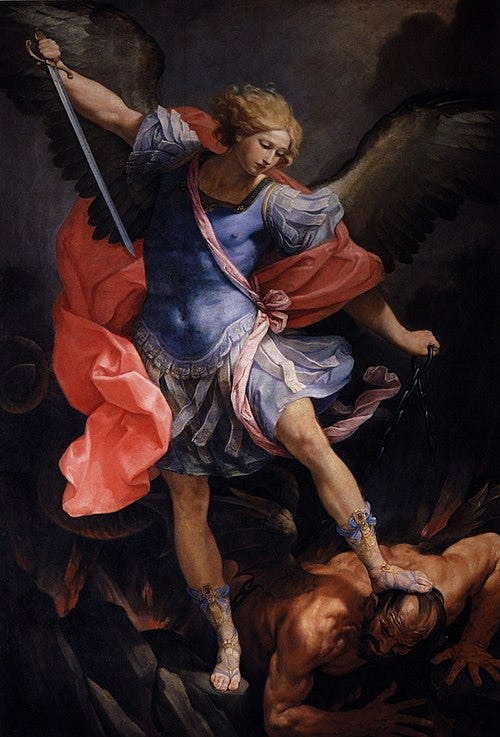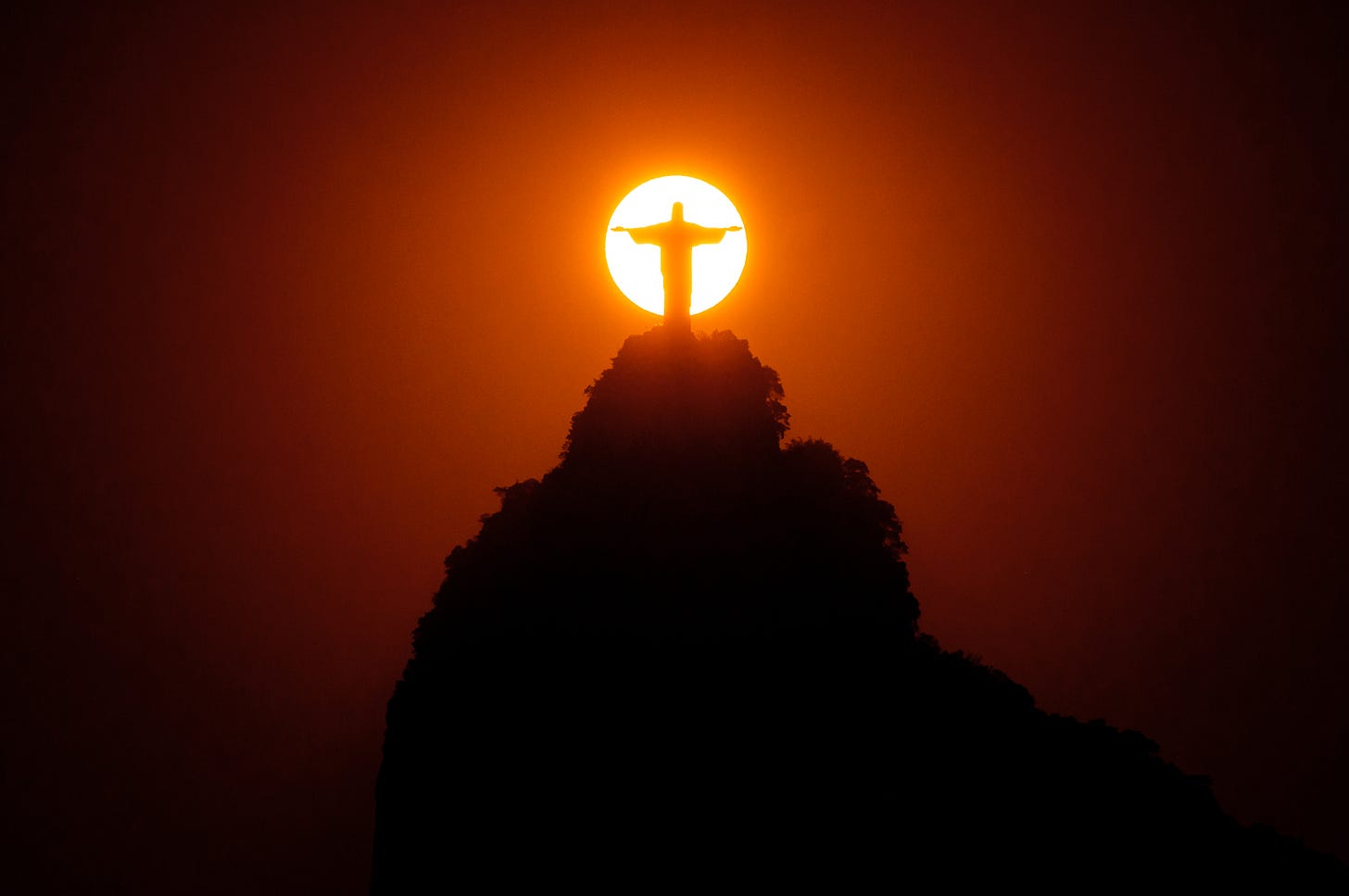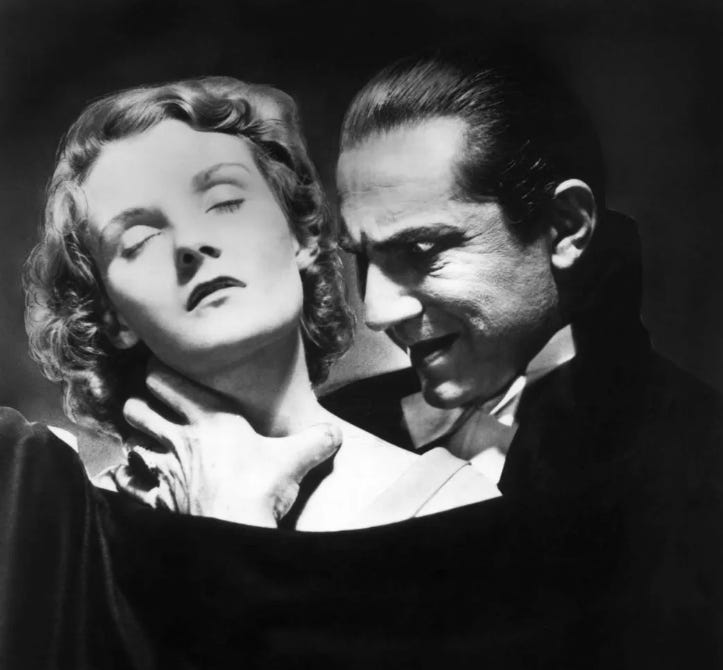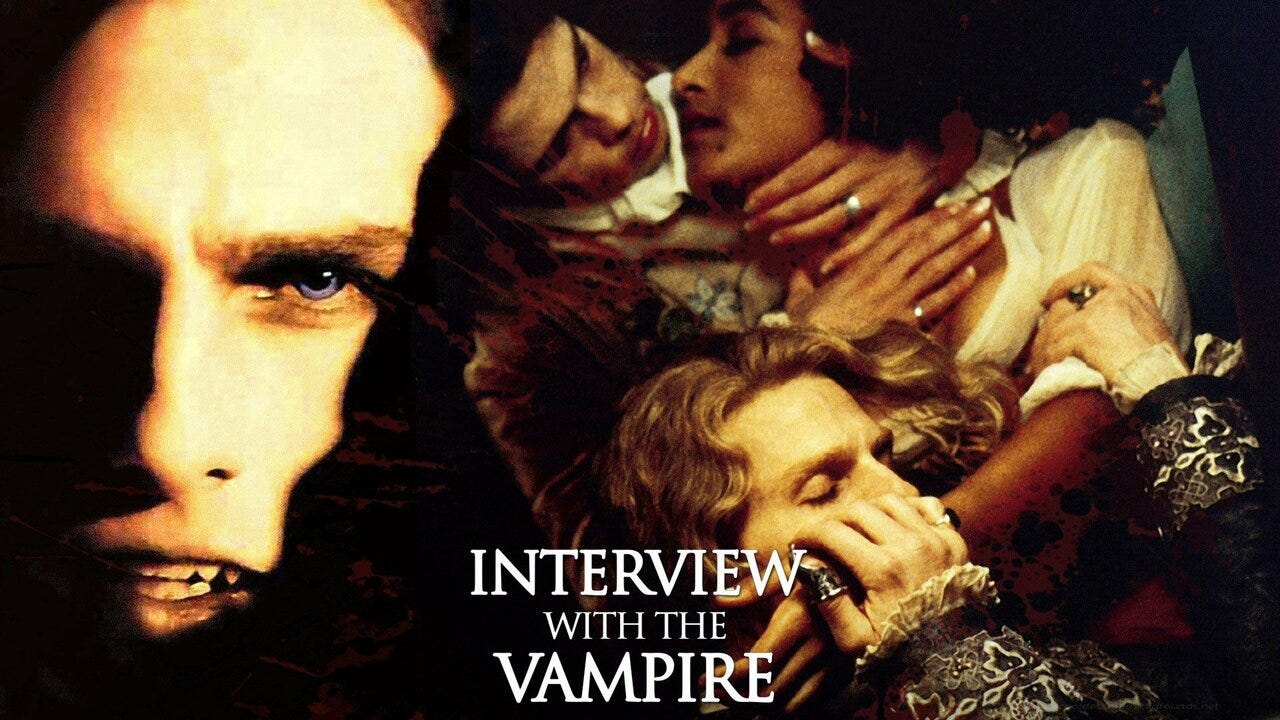Why Vampires Fear the Cross
How vampire myths reveal the soul’s battle with sin and salvation.
From the misty forests of Eastern Europe to the glowing screens of modern cinema, the vampire lurks in our imagination. Pale, alluring, and cursed, the figure of the vampire fascinates us because it embodies something both terrifying and strangely familiar. Here is a creature that cannot face the dawn, that drinks blood to survive, and that recoils at the sight of the cross.
But beneath the Gothic costumes and pop-culture glamour lies something deeper. The vampire is not just a horror trope. It is a parable of sin itself, a shadow of what happens when the soul turns away from the light of God. An example of the brutal confrontation we must sometimes have with ourselves to escape sin. In every vampire story, we glimpse a theological drama: the corruption of the soul, the counterfeit of eternal life, and the unstoppable victory of Christ’s light…
Sin as Parasitic Hunger
At its heart, sin is not creative. It does not bring forth new life or lasting joy. Instead, sin drains, consumes, and depletes.
A vampire does not grow food, raise children, or create beauty. It only feeds parasitically on the living. In this way, the vampire is an image of what sin does to the soul. Lust reduces others to objects. Greed devours joy. Pride feeds off the humiliation of others. Every sin takes rather than gives.
St. Augustine described sin as curvatus in se, the soul “curved inward on itself.” Instead of living in openness toward God and neighbor, the sinful soul folds in, feeding on itself, unable to flourish. The vampire embodies this reality: a creature closed off, condemned to repeat the same hunger, unable to love or to be loved except by draining others dry. Echoed by J.R.R Tolkien’s words in The Silmarillion:
“The Shadow that bred them can only mock, it cannot make: not real new things of its own. It cannot make real new things of its own. So it corrupted them.”
This is why vampire stories resonate. Deep down, we recognize the same danger in ourselves. Sin promises sweetness but leaves us hungry, restless, and empty.
The Inverted Eucharist
In John 6:54, Christ declares: “Whoever eats my flesh and drinks my blood has eternal life.” The Eucharist is the supreme act of self-giving: Christ pouring Himself out so that we may live. Every Mass is a renewal of this mystery, life through the blood of Christ, shared freely.
Vampirism is a twisted parody of this sacrament. The vampire also drinks blood, but not in communion or grace. Instead, it steals blood to prolong a cursed existence. This is not a life-giving sacrament but a sacrament of corruption. It is a false communion, where the consumer is damned and the victim is destroyed.
Just as idolatry distorts true worship, vampirism distorts the Eucharist. It is the devil’s parody of salvation: taking what Christ offers freely, and twisting it into an endless hunger.
Bram Stoker’s Dracula understood this inversion. The Count drinks the blood of others, binding them to himself in unholy communion. By contrast, Van Helsing and his companions fight with crucifixes, consecrated wafers, and Scripture… The true sacraments that restore life. The novel is less about Gothic scares than about a battle between corrupted, counterfeit blood and the true blood of Christ.
Darkness Cannot Bear the Light
Every vampire tale has the same refrain: the creature cannot face the sun. In folklore, the first rays of dawn reduce the vampire to ash. The symbolism is unmistakable. Malachi 4:2 promises that “the Sun of Righteousness shall rise with healing in its wings.” In Christian theology, light is not just physical it is the very presence of God.
The vampire also recoils from the cross, the sign of Christ’s victory over death. It cannot step onto holy ground, because consecrated spaces reveal its corruption. Even in secular retellings, these symbols remain. The vampire may be updated into modern clothing, but the cross still burns, holy water still scalds, and daylight still destroys.
John 1:5 says, “The light shines in the darkness, and the darkness has not overcome it.” That verse could be the motto of every vampire tale. The creature embodies darkness, but it cannot bear the presence of holiness.
This is no coincidence. Folklore preserved this imagery because it reflects the truth of sin. Sin thrives in shadows. It grows in secrecy, in what is hidden, in what is left unconfessed. But when brought into the light of Christ through repentance, through prayer, through the sacraments, it cannot endure.
The Undead Soul
One of the most haunting features of vampirism is its liminal state: neither alive nor truly dead. The vampire is the “undead,” trapped in a twilight condition, unable to rest.
This is a startlingly accurate image of the sinner cut off from God. Paul writes in Ephesians 2:1: “You were dead in your trespasses and sins.” Without grace, the human soul is not fully alive, even if it walks and breathes. Like the vampire, it is restless, cursed, and unable to die in peace.
Medieval folklore often connected vampirism with improper burial or excommunication. The soul that had rejected the Church’s life could not rest in consecrated ground. The vampire myth captured this terror: to die outside of grace is to remain spiritually restless, unable to enter the peace of God.
Modern audiences may not fear improper burials, but we still know the restless hunger of the soul without God. The undead figure is not just Gothic horror, it is a mirror of our spiritual condition when enslaved to sin.
Christ the Vampire-Slayer
In every story, the vampire is destroyed not by human cleverness but by holy power. A crucifix, a consecrated host, or the first rays of dawn. The symbolism is clear: only Christ can conquer sin and death.
We may resist temptation with discipline, but the deeper corruption of the soul cannot be healed by effort alone. It is the power of God’s grace that slays the vampire within us. As Revelation 12:11 declares: “They overcame him by the blood of the Lamb.”
Notice the inversion again: the vampire steals blood to curse others, but the Lamb gives His blood to bless. The vampire’s hunger is endless, but Christ’s blood satisfies eternally.
The true vampire-slayer is not Van Helsing but Christ working through the human vessel. Every crucifix lifted in folklore points back to Calvary, where the curse of death was broken. Every vampire recoiling from holy water reminds us that baptism destroys sin’s hold. The myth only has power because it reflects the greater reality of redemption.

The Modern Vampire and the Modern Soul
Today’s vampire stories often strip away the Christian elements. In Twilight or Interview with the Vampire, the vampire is no longer a monster to be slain by the cross, but a romantic anti-hero. He is brooding, misunderstood, even desirable.
This shift reveals something about our culture. We are less afraid of sin, and more tempted to sympathize with it. What once was seen as corruption is now seen as identity. The vampire is glamorized in the same way sin is normalized, attempting to deliberately lead us astray by evil.
And yet, the deeper truth remains. The vampire still cannot face the sun. Even in its most secular retellings, the myth cannot escape the allegory: sin flees from light. Addiction, lust, consumerism, self-idolatry, all the modern vampires still leave people drained and enslaved. We may dress them in glamour, but they remain parasitic.
Faith reminds us that the only true liberation comes not from embracing the vampire, but from embracing the cross.
In Conclusion
The vampire is more than a Gothic monster. It is a mirror of our fallen condition: a warning of what happens when life is sought apart from God. A vampire cannot see it’s own reflection, mimicking our lack of self-introspect when we are deep in sin and addiction. It drains, enslaves, and disfigures, leaving us shadows of what we were created to be.
But the story does not end in the coffin. The Christian hope is that Christ’s light breaks every curse. No darkness can withstand His cross. Where the vampire recoils, the saint rises. Where sin corrupts, grace restores.
The night belongs to the Vampire… But the day belongs to Christ.










Excellent article!
I really enjoyed this! It's something different. I could use more talk of beasts and legends.